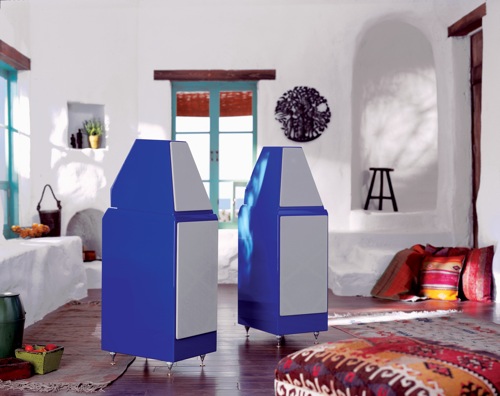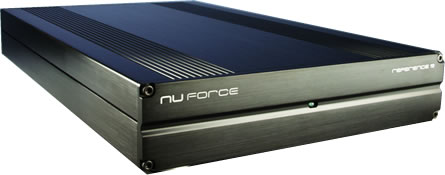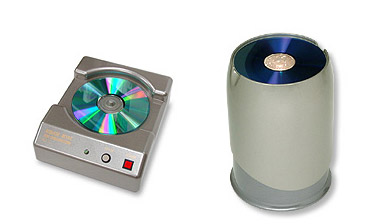Random Noise 01

Random Noise 1
An old boy’s toys
For approximately a quarter-eon after the Big Bang, I wrote for The Stereo Times and did some editing too. Allow me to remark that editing is a dispiriting chore. As often as not, the more assiduous the editor, the more pissed off the editee. So now, well along in my second childhood, I’ve returned to the old cyber-sod with my very own column wherein I intend to rattle and prattle on about music and audio. I might even be cajoled into parting with my recipe for braised raccoon. But let’s limit today’s topic to audio. (See what I mean about a column? I write “let’s” but really mean, “Brace yourself, Bridget, for this is what I’m going to do.”)

My last gig was with a Sound Stage publication, UltraAudio.com. I covered some nifty stuff but was denied a chance to write about my recentmost speakers, Wilson Audio’s eighth iteration of the WATT / Puppy system. My UA editor set that pleasure aside for himself. (His comments have yet to appear.) Gathering up my wounded pride, I covered the 8 for my own Webzine, LaFolia.com.
Here, then, a thumbnail summary of the speaker’s strengths and attractions. Gorgeous to look at, Bentley quality, as is fitting, considering the price. Transparency and resolution are among the 8’s strongest features, likewise what I hear as an absence of coloration – if it’s at all possible to describe any speaker as uncolored. From the softest whisper onward, the 8’s dynamics leave little to desire. For a reviewer particularly, the speaker’s capacity to reveal changes elsewhere in one’s system – cables, acoustic isolation, amplification, whatever – remains of paramount significance.
I hesitate to describe the 8 as musical, even tho it does yeoman service in that department. It’s the term that gives me pause. I’ve discovered, for many of us sound geeks, that “musical” mean colored. I’ve also discovered, for many of us sound geeks, that recordings serve as fuel. For the key to understanding what I mean by that cryptic remark, try asking your target subject, “What kind of music do you like?” If he or she responds, “Oh, all kinds,” the fuel’s composition matters less than how brightly it burns. For my part, type of music notwithstanding, I want to get as far into the recording as it’s possible to go, which means in effect that I don’t want my components providing euphonious interpretations to the software’s contents. And that brings me to a surprise.

An absurdly small pair of digital mono amps – review items – flat-out humiliated the 200-lb. behemoths I’d been using for several years. You may have seen the Mark Levinson No.33H monos. They call to mind what a matched pair of space heaters in Flash Gordon’s pied-à-terre might have looked like. I believe they’re still in production and even more expensive than the $20k they cost when I acquired them from Madrigal Audio Labs as compensation for editing La Folia, then under Madrigal’s sponsorship. The engineering is astonishing. The 33H doubles its output as the load’s impedance is halved, down to one ohm. While there aren’t many amps capable of that, an amazing feat didn’t deter the 33H pair from sounding rather crude in comparison with NuForce Reference 9 SE monos ($4k / pair), which have since joined this reporter’s sound system.
The Ref 9 SE is as clean, open, transparent, dynamic and honest a component as ever I’ve heard. Tiny as they are, they’ve never proved wanting in driving the 8s. Recently, I reminded myself of that with Xenakis: Percussion Works (Mode 171 / 173, three CDs). A number of these compositions by the maverick avant-garde composer (1922-2001) feature large drums that shook the room. Some early design problems – start-up and turn-off noises – have been ironed out. Version 2, which I’ll probably cover here, is said to overcome the present model’s only fault. My wife and I listen to FM radio as we work in our respective art studios, and the Ref 9 SE’s RFI necessitates their being turned off when, ideally, I’d prefer to keep their circuit boards warm. Not that it seems to matter. The amps sound great immediately after turn-on. (As a curiosity for those who care, it isn’t the amp that broadcasts the RFI so much as its speaker cable. Disconnect the cable and the FM interference stops.)
While I don’t mean to beat up on Mark Levinson products, the next piece of gear likewise trounced another component bearing that world-famous marque, the No.390S CD player. My since departed 390S began life as No.39, which Madrigal upgraded, the “S” designation indicating la crème de la crème. Compared to the player that replaced it, one heard a fair amount of gravier in the crème. (For you Anglophones out there, the word means “gravel.”)

The 390S’s successor, the Integris CDP, is the work of Derrick Moss. His company, Aurum Acoustics, is a fairly new enterprise based in Canada. I’ve discovered that the CDP designation often indicates player only. The Integris’s “P” actually stands for “preamp.” Derrick Moss conceived the CDP to operate, ideally, with his fully integrated 300B audio system. At $12,000, it’s an expensive component that, at these altitudes, i.e., the Fanatics’ Republic of Audiophilia, is reasonably priced for what it accomplishes: resolution beyond one’s fondest dreams, dynamic subtlety, harmonic veracity, and it makes a wicked good espresso. For a fuller explanation and views of innards and outards, go to www.aurumacoustics.com.

I just submitted my final Ultra Audio review, as it happens, of the most intriguing stuff I’ve yet covered. It won’t be posted till April 15. Until then, it wouldn’t do to say much here other than I’m buying Acoustic Revive’s RD-3 Disc Demagnetizer and RIO-5 II Tourmaline Negative Ion Generator, the work of a Japanese innovator, Ken Ishiguro. Together they do good things to CDs. The US distributor is atLotusGroupUSA.com. You can click on Acoustic Revive there or go directly toAcoustic-Revive.com.
I’m using Nordost balanced Valhalla interconnects between the CDP and Nuforce amps, and Nordost Valkyrja speaker cables. The electronic components sit atop trios of Golden Sound DH Cones and DH Squares. For the CDP, there’s also a 16x16x2-inch concrete garden tile supported by a quartet of Vibrapod Cones. The power cords to the three electronic components are Aurum Acoustics’ mod of Cardas Golden Reference. The two to the digital amps have ferrites at the IEC end, the one to the CDP, not. At Derrick Moss’s suggestion, a Richard Gray’s Power Company 1200S occupies the other outlet of the dedicated duplex the CDP’s plugged into. (The audio system has four FIM 880 duplex outlets at its disposal.) Moss feels that the unit benefits from the RGPC’s enormous choke. He also recommends, and now installs, a gold-plated Isoclean Power fuse in his CDP.
And I do believe that’s about it. Next time, music. Brace yourself, Bridget….
Mike Silverton
![]()
Don’t forget to bookmark us! (CTRL-SHFT-D)
Stereo Times Masthead
Publisher/Founder
Clement Perry
Editor
Dave Thomas
Senior Editors
Frank Alles, Mike Girardi, Russell Lichter, Terry London, Moreno Mitchell, Paul Szabady, Bill Wells, Mike Wright, and Stephen Yan,
Current Contributors
David Abramson, Tim Barrall, Dave Allison, Ron Cook, Lewis Dardick, John Hoffman, Dan Secula, Don Shaulis, Greg Simmons, Eric Teh, Greg Voth, Richard Willie, Ed Van Winkle, Rob Dockery, Richard Doran, and Daveed Turek
Site Management Clement Perry
Ad Designer: Martin Perry





Be the first to comment on: Random Noise 01